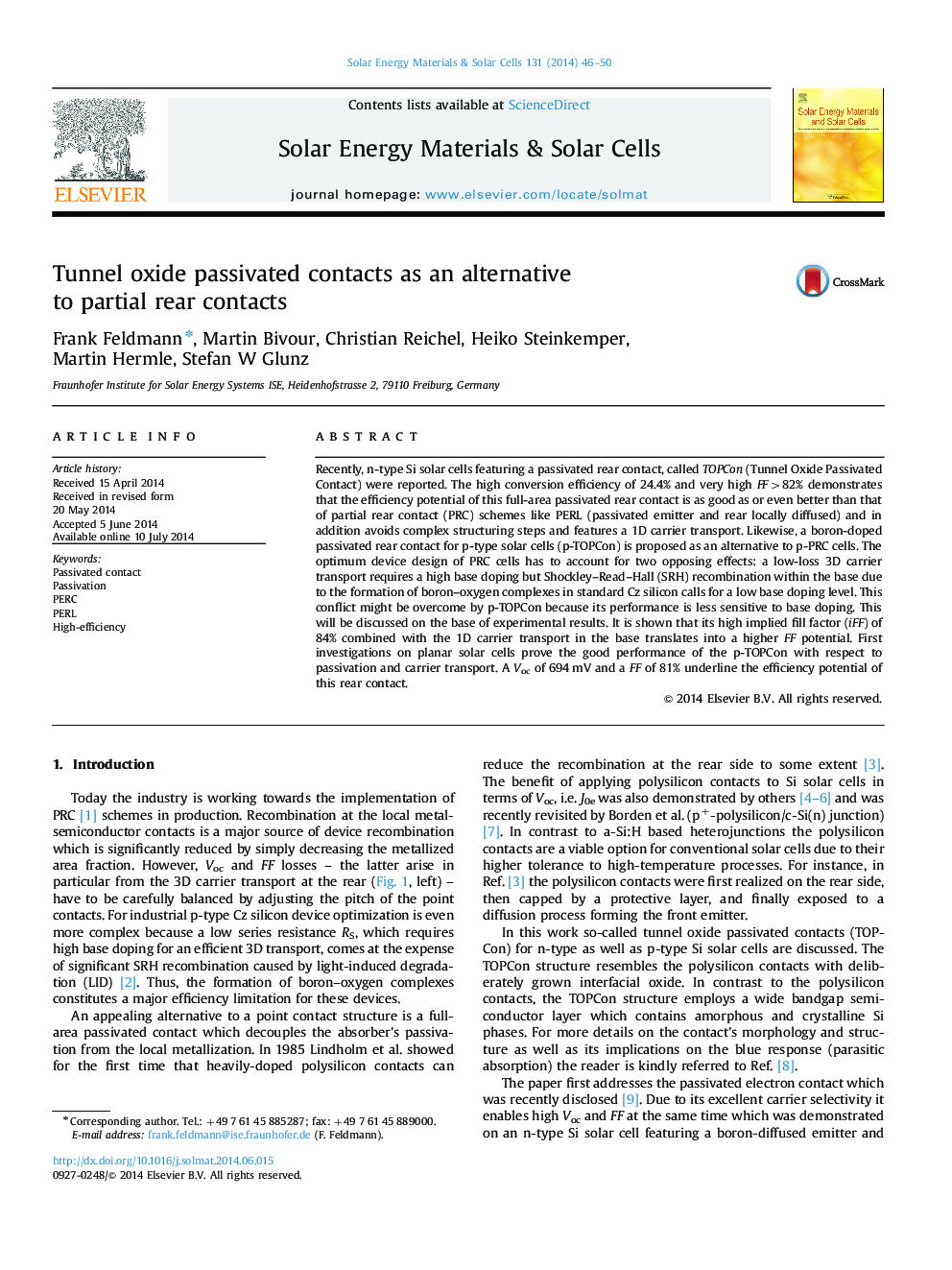| Article ID | Journal | Published Year | Pages | File Type |
|---|---|---|---|---|
| 77947 | Solar Energy Materials and Solar Cells | 2014 | 5 Pages |
•Passivated rear contacts as an appealing alternative to partial rear contact cells.•Outline of the on-going development of passivated rear contact for n-type cells.•Champion cell efficiency: 24.4 %.•Passivated contact for p-type cells is investigated in detail.•Performance studied on prototype cells (high Voc and FF).
Recently, n-type Si solar cells featuring a passivated rear contact, called TOPCon (Tunnel Oxide Passivated Contact) were reported. The high conversion efficiency of 24.4% and very high FF>82% demonstrates that the efficiency potential of this full-area passivated rear contact is as good as or even better than that of partial rear contact (PRC) schemes like PERL (passivated emitter and rear locally diffused) and in addition avoids complex structuring steps and features a 1D carrier transport. Likewise, a boron-doped passivated rear contact for p-type solar cells (p-TOPCon) is proposed as an alternative to p-PRC cells. The optimum device design of PRC cells has to account for two opposing effects: a low-loss 3D carrier transport requires a high base doping but Shockley–Read–Hall (SRH) recombination within the base due to the formation of boron–oxygen complexes in standard Cz silicon calls for a low base doping level. This conflict might be overcome by p-TOPCon because its performance is less sensitive to base doping. This will be discussed on the base of experimental results. It is shown that its high implied fill factor (iFF) of 84% combined with the 1D carrier transport in the base translates into a higher FF potential. First investigations on planar solar cells prove the good performance of the p-TOPCon with respect to passivation and carrier transport. A Voc of 694 mV and a FF of 81% underline the efficiency potential of this rear contact.
